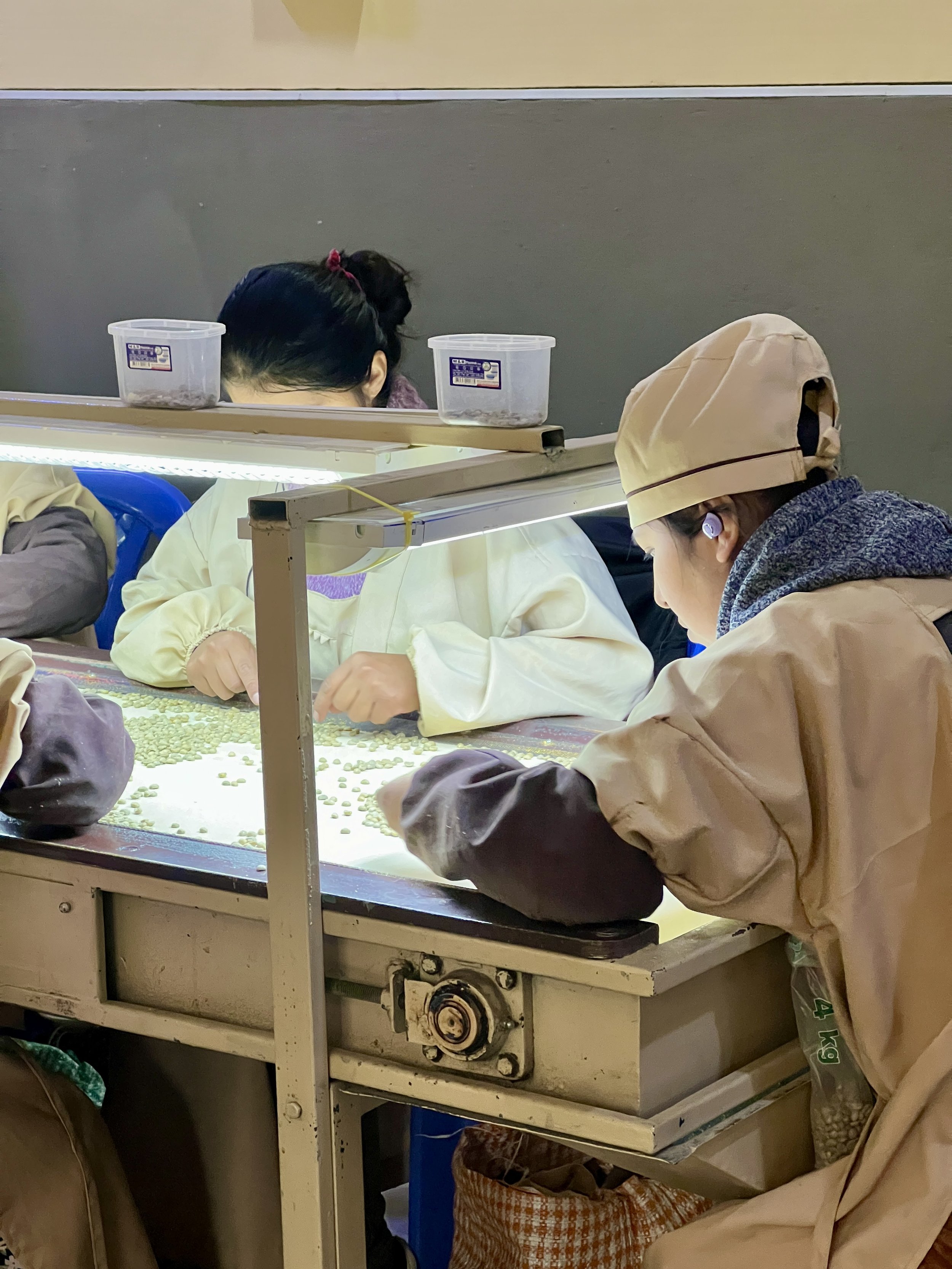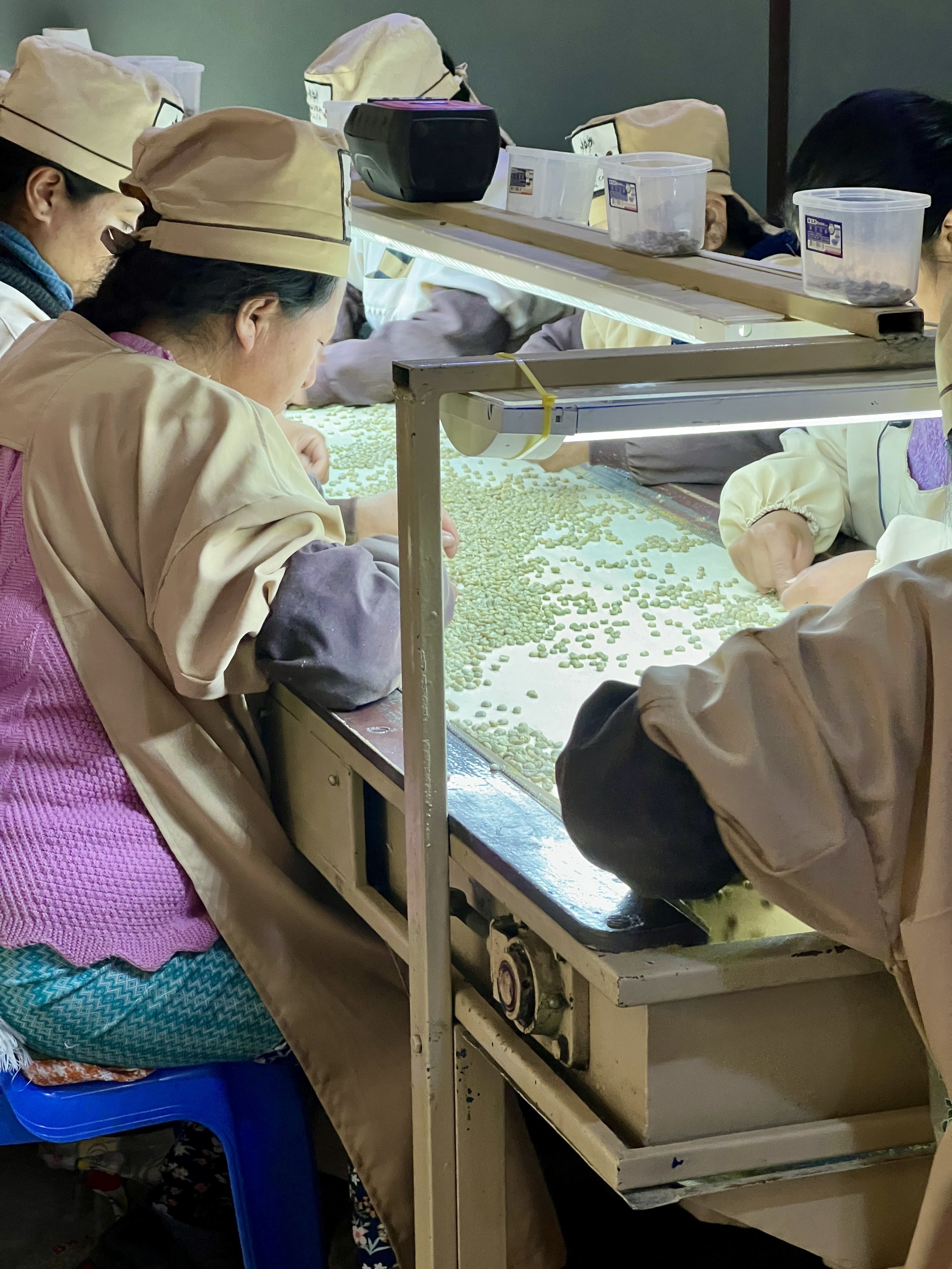Journey into Bolivian Coffee: Nurturing Coffee Quality from Plant to Roastery (Part 2/2)
Missed part 1 of 2? Read all about our visit to Caranavi here.
Packing at the Dry Mill Plant
After our intense day in Caranavi, the journey continued to El Alto, where the elevation reaches a staggering 4,000 masl. Here, against the backdrop of the Andes, we dedicated the second day to a crucial yet often overlooked step in the coffee production process: packing at the dry mill plant. For the third consecutive year, we took a hands-on approach, personally overseeing this vital stage – a practice that sets us apart in the industry.
The Unseen Value of the Dry Milling Line
While the magic begins at the farm, it doesn't end there. The final product coming from the farm is only part of the work happening at origin, as it is not ready yet to be roasted. The dry milling and selection process, although less glamorous, are indispensable to ensuring the beans are export-ready. The complexity of this process unfolds in several stages, all designed to ensure the highest quality of the green coffee at the end of it:
Hulling Machine: Separating the green beans, often referred to as "verde oro" or green gold, from the remaining layers.
Screening Table: Beans pass through screens of different sizes, categorizing them based on size. Smaller beans are typically discarded for commercial coffee, while peaberries are separated from the lot.
Densiometric Table: Density-based separation for a more consistent roast.
Optical Selector: An optical machine eliminates imperfections such as quakers, sour beans, and blackened beans, ensuring only the finest beans proceed.
The huller and screening tables at the dry mill.
The Human Touch: Manual Selection
The most labor-intensive step follows – manual selection. Specially trained women engage in a meticulous two-step process: the beans pass through a dark chamber with UV lights, highlighting any quakers (undeveloped beans), and then through a group of women who manually pick out beans with primary and secondary defects. Achieving specialty grade demands rigorous adherence to a strict quality control protocol.



This painstaking work involves scrutinizing each bean under bright light on a fast-moving belt. Having tried it ourselves, we can attest it's a task best avoided for long periods. Only when the head screener or the client approves the results, the beans are ready for packing. If not, they undergo further screenings until the desired quality is achieved. The higher the cupping score, the higher the quality threshold.
Ensuring Integrity from Dry Mill to Roastery
The journey doesn't end here. After the manual selection, we assist in precisely measuring the 20 Kg of green coffee for each box. These beans are then sealed in special air-tight transportation and storing bags, placed in perfectly sized cardboard boxes to safeguard them during their journey from Bolivia to Locarno. This meticulous process and total absence of oxygen, ensure the beans remain as fresh as possible until we roast them for you.
Yann and Fernando bagging coffee from Finca Isabel.
Beyond Quality: Responsibility and Fair Trade Practices
Our commitment extends beyond quality; it encompasses ethical responsibility. By personally overseeing the packing process, we gain two advantages. First, we ensure that the received lots align with the quality of the samples we initially tried. Second, and equally important, we take immediate ownership and responsibility for the green coffee. This involves paying the producers promptly and in full, diverging from the industry norm where producers often wait months for payment.
In challenging the status quo, we aim to rectify a market malfunction where the most vulnerable link – the producers – extends credit to the more financially robust actors in the supply chain. Although the volume we trade may not be substantial in industry terms, it signals a shift toward fairer practices. Our goal is to reshape the coffee market into one that is not only quality-driven but also fair and equitable. As we pioneer this change, our relationships with producers deepen, creating a ripple effect that resonates across the coffee-producing communities. The next time a unique and special lot emerges, who do you think will be the first to receive the offer?
Receiving our coffee boxes at the roastery in Locarno.



